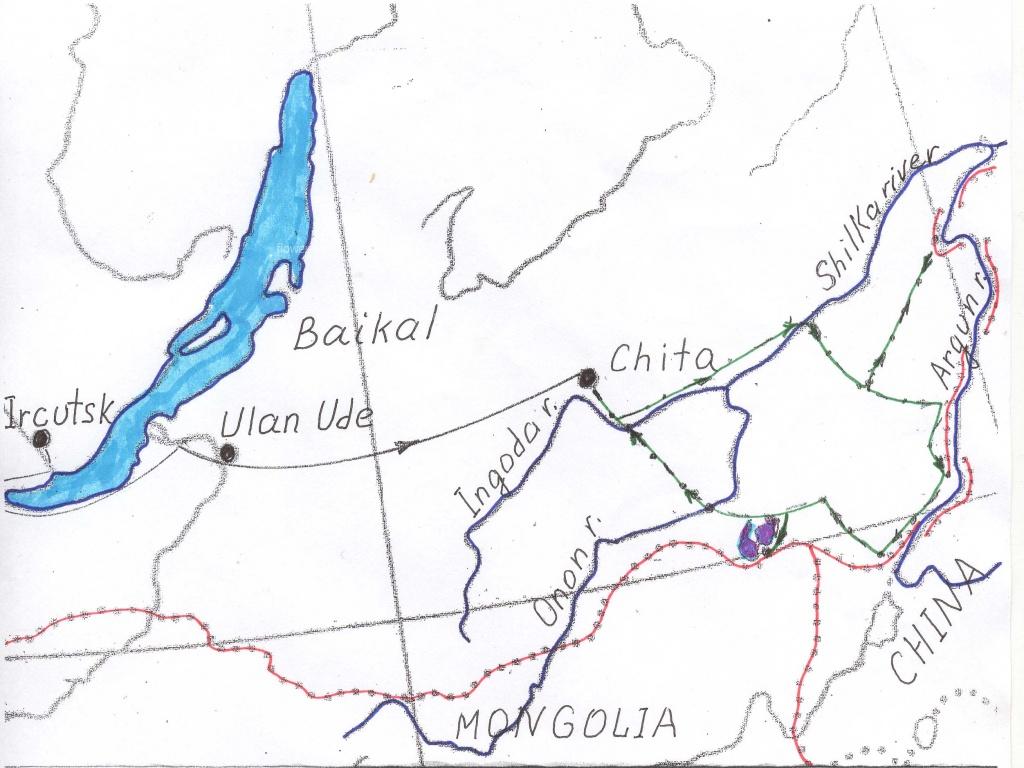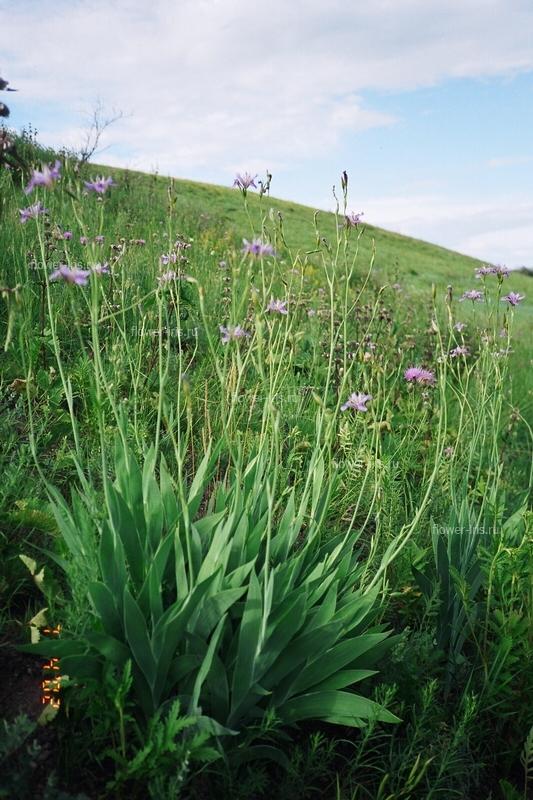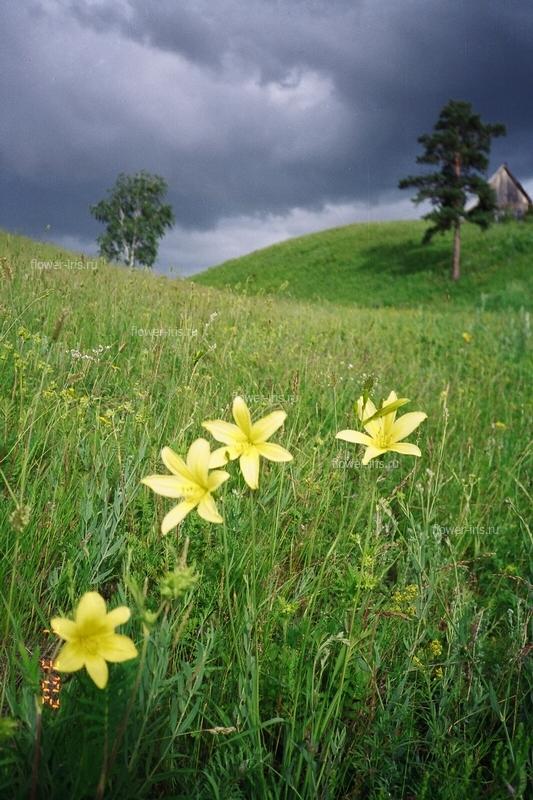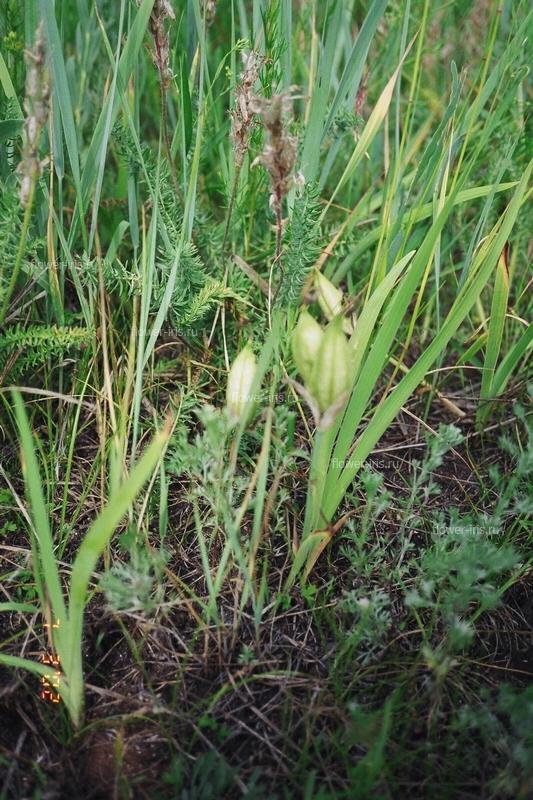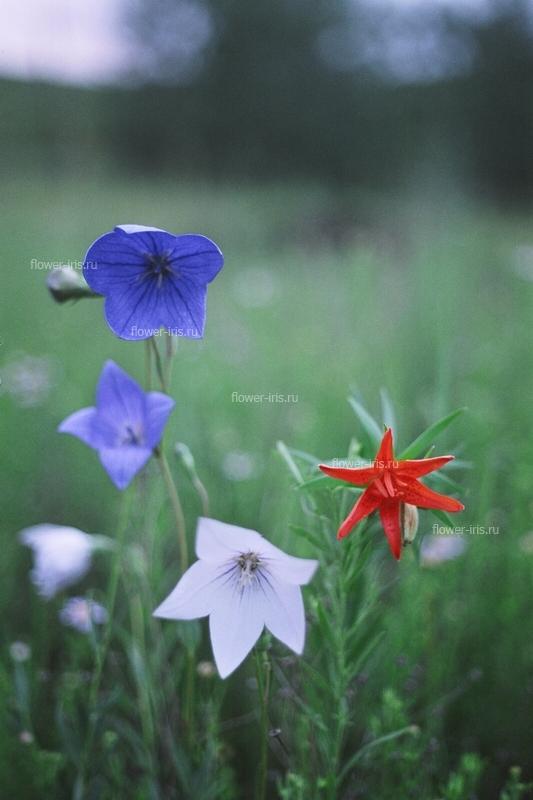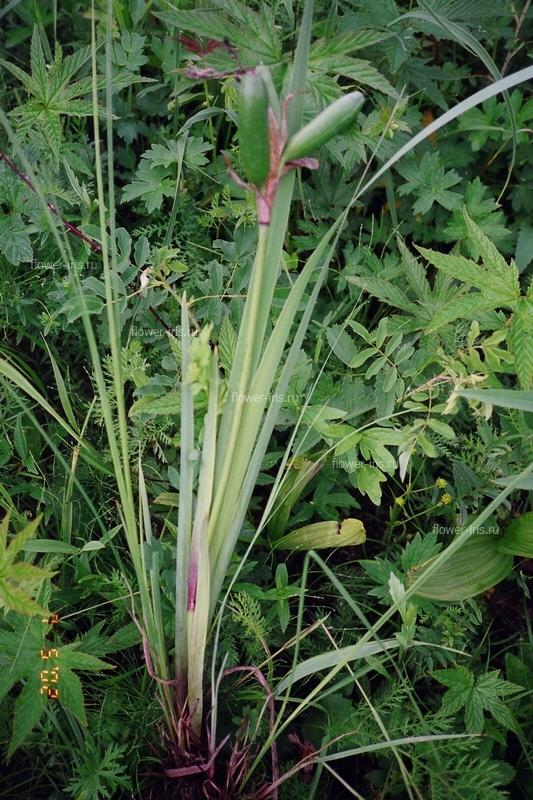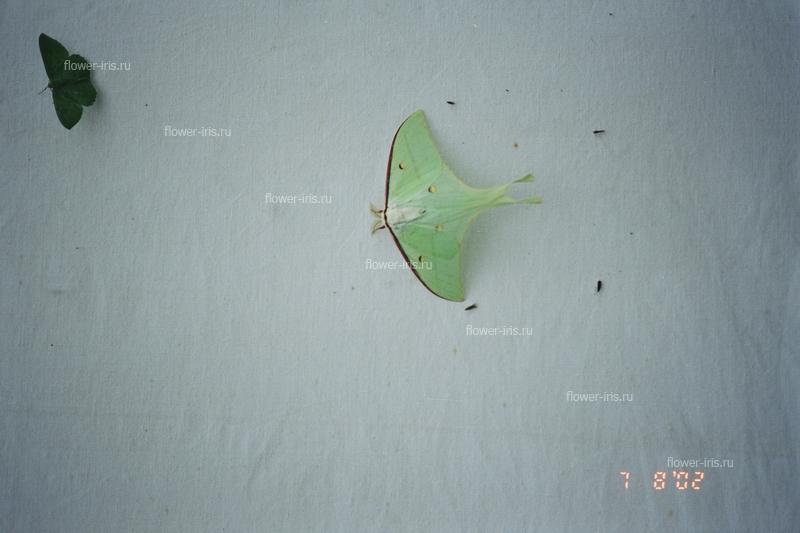|
News Photo Gallery |
Expeditionary trip for Irises to Transbaical regionHomepage → Tours and Expeditions → Expeditionary trip for Irises to Transbaical region Our research of Irises carried out in St.Petersburg Botanical Garden is aimed to collect and study It is species in nature and their observation in cultivation. It needs deep analysis of literature devoted to this problem and visiting as many places of their growing as possible, as well as revision of all the Iris collections available and meeting a number of present date collectors created and study these plants. The expeditionary trip to Transbaical region has been the continuation of number of such trips aimed to explore North Caucasian and Altay regions undertaken earlier. Transbaical region is known as a place where the lagest number of genus Iris species grow, which is about 16 species. It is the place where many Irises were collected for the first time and described by such famous botanists as Maximovich and Pallas. We were informed as well that in Chita where the Transbaical Botanical Garden is situates the passionate Iris amateur Galina Zinovieva collected the unique collection of this wonderful plants. There fore it was Chita region that had been chosen as the place of destination for the last Russian expedition aimed to search wild Iris species, to survey the local Iris collection and to meet its collector. Chita region is located in the south east of Siberia and borders on China and Mongolia (see map, showing the large rives, Chita and our route). We got to this place at first by airplane to Irkutsk, then changed for the train to Chita passing along the South coast of Baical lake, had covered as a result 6 time zones. It was about 350 years ago when Russians had settled in this place and had founded some settlements on the banks of Shilka river and Ingoda river, reached soon after Banks of main river Amur. The first explorers of this region discovered a poor populated area with rich flora and fauna. The climate there was rather severe but nevertheless milder than in Enisey and Lena regions. One of the previous settlements has developed into a big city called Chita with the population more than 300 thousand people, but others, having transformed into small towns, have been still scattered throughout the region and not numerous. The average density of population is very low, about 1 person per 1.5 km2, that’s why one can find plenty of places with wild virgin nature. Our pourney was planned to begin from Chita Botanical Garden. It was there that we met Galina Zinovieva. She has been introducing and cultivating species of the genus Iris in the Garden, collecting then everywhere, as well as many other species and cultivars growing them from seeds. The largest collection of Iris tigridia Bunge, represent by 15 specimen from different parts of Transbaical region is located there and all of them give flowers and capsules. They have very rich range of colours from white with some speckles till blue, violet-blue, crimson and dark-violet. The fact that the climate in Chita is rather severe for iris growing, with essential difference between day and night temperature, which is sometimes up to 25°C and hard sun radiation as well as with lack of normal snow cover only some years reaching 8 cm, should be taken into account. The first two days were deveoted to study of the Iris collection as well packing and preparation for departure. The special expeditionary car called UAZ was given us. This is two-wire very convenient Russian car designed for expeditions and long journeys, which accommodates 6 person (with carrying capacity 800 kg). Our companions in this expeditions were entomologies from Novosibirsk, who made this long way for some thousand km in searches of rare butterfly – Yellow Zefir. The departure was fixed on the July 03.2002. Since then there had been 8 of us in our team. By the way, the time of our departure hadn’t been chosen by chance. It’s the time when there are no monsoon rains many roods unavailable in other time of the year. For the first day of the trip we had passed about 250-300 km to the East. The part of our way was passing along the banks of Ingoda river with forests and rare scattered villages. When the road went aside of the river, wood-steppes with more interesting vegetation had appeared. We were glad to meet so familiar perennial plants such as: Hemerocallis minor (photo 1), Lilia, Companula etc. Sometimes along the road we met the artels of gold-diggers, washing gold in the numerous small rivers around. Along the road we met a lot of Japanese cars, driven by Russian commersants from Vladivostok for sale in Central Russia. We stopped for dinner in the café nearly the mine road and had so called “buzi” – local traditional food (something like Russian pelmeni with more meat inside). During the first day the collections of such species as I.humilis (photo 2), I.tigridia, I.uniflora Pall., I.dihotoma Pall. (=Pardantopsis dihotoma) had been made. For night we stopped near the small river, flowing in the steppe. Our stop was not far from Transsiberian magistral (main line). Built at the beginning of XX century it is one of the longest railway main lines in the world – about 9.5 thousand km long and entered into The Guinness record book! During this night stop we had unusual experience of observation for the night butterfly hunt. All the night long the special electrical generators and powerful neon lamps had been working and great many butterflies and moths were flying the light and getting into special trap where they were falling a sleep of the chlorophorm vapour. The night catch consisted of half of the big pail with sleeping moths and it would take hours of sorting them ahead. Afterwards only some of them could be selected for the museum in Novosibirsk. In the morning at the place of our stop among Ulmus japonica and Memispermum dauricum one more Iris species – I.bloudowii Ledeb. was found. Around the river banks at the distance of about 1 km there was dry and burnt steppe with only small bushy is lands grown. To get to the forest we had to cross the steppe where locusts were chirring and crowds of gigantic gadflies were flying and then to climb up the sheer rock and only afterwards we were able to enjoy the shade of the birch forest with great many plants of I.uniflora grown among paeons and ferns. The next day we got the permission for access into frontier zone. We were instructed that if we had found some gold we might have dug it as much as we wanted but to export it was prohibited (it is a joke of local frontier-guards). That day we crossed the Borshovochny mountain range, which is not very high but with alternation of wood-steppes and steppes and changing of birch and larch forests. One of the most interesting stops in our journey was that one 90 km to the south of Sretensk, where we had spent two nights. It was there that we had collected the largest number of Iris species at the one location. The reason was that the landscape (relief) in radius of 3 km of the camp was very variable. The larch forest was rich in I.uniflora; at the dry open hills and on the marshlands a great number of I.dihotoma were is blossom (photo 3) but I.tigridia bore fruits. Along banks of springs groups of I.sanguinea Donn. grow, higher in the birch underwood individual plants of I.sibirica L. were found in low locations along starica among the very tall (up to 1m20cm) Lilium pensilvanium plants of I.laevigata Fisch. (photo 4) were seen. Moreover this stop was interesting in that the day turned to be especially not and all the way long we were followed by thousand of different insects. This stop was very fruitful for the entomologists as well. They managed to catch the largest in Transbaical region butterfly – Saturnia Gnoma in light-green color. By shape it looked like airplane Stels F-117 (photo 5). After that we continued our tourney, dropping into small town Gazimurowsky Zawod for refueling our car. These gasoline filling up station are locted only in the district town-centers, because this region is very sparsely populated. Taking chance, our entomologist didn’t loose time and sitting in the huge puddle in front of the local shop were fishing from it some strange leeches and slugs for fun of local idle on lookers. From this town we were moving to the north-east to the place of the greatest interest of our fellow-travellers, because there aim was to collect the complex of insect species living in the Oak forests (Quercus mongolica). Only hills on the bank of Argun river on the Chinese border appeared to be such place. During the first part of our way some small settlements were we filled our foodstore such as potato, sour cream, butter, eggs etc. were met. Taking it to account that the soil contains the wild layer of black-soil, but herbs in such places are higher than 1 meter, all the agricultural products there were delicious! The second part of the way went through the forests without any habitant places. During 4 hours of our way we met only one car which shows the traffic intensity in this area. After having been registred at the frontier post, we had learnt that we wouldn’t have given the motorboat for our trip to the oak forest, so we had to get there ourselves. While the head of our expedition was talking to the chief of the frontier-post, went upstairs to the observation frontier tower and enjoyed the wonderful sight of Argun river, the Chinese frontier post, situated on the opposite bank was perfectly seen in through fildglasses. We were able to see the Chinese frontier guard standing on his post and trying to drive away gadflies with branch. Hearing them buzzing everywhere, one could understand that it was not an easy job to stand on the post for hours. The banks of Argun river seems to Chinese something like subarctic taiga, something badly suitable for living. But for Russians it is one of the south most point of Siberia with very favorable climate. Our stop was chosen taking into account the location of the oak forests. The camps was situated at the edge of forest glade, where the main herb of the grass cover was I.uniflora. We had set our tents right on these plants (photo 6). The luxurious Paeonia lactiflora (photo 7) with crowds of butterflies above grew nearby. It was surprisingly strange that our entomologists managed to notice something rare and catching a butterfly net to cover the booty all of sudden. This place turned to be of interest for iris collection as well. On the rocky slope with great efforts I.potaninii Maxim. (it grew in one location individually), as well as I.ensata Thunb. near the river. Along the road the groups of I.sanguinea with the leafs higher our flower than the pedicel flower stalk. The largest amount of herbarium material for Komarov Botanical Institute (more than 30 pages) was collected at that place which undoubtly filled the richest collection of the herbarium. All the days long while staying near the border, the weather was tiresome hot. With the humidity about 100% all the kinds of work just the easiest one made your clothes absolutely wet in some minutes. In search of Irises we had made some radial trips around, collecting strawberry (aroundant everywhere) as well and fishing there was few of fish. The river with many rapids flew in ten minute walk from our camp and its cool water we found a shed from the terrible heat. Our favorite activity was watch the tiny gold pieces on our rubber boots, but all the attempts to get some real amount of gold had no result. Visiting the oak grove impressed us greately; at first it took us about 2 hours to get to the place and we had to climb up and down the hills; the second was that the tops of the hills were covered with Rhododendrons so we could imagine the bright colors of spring there when everything was blooming. During all this 2-hours way we regularly met I.uniflora growing among other herb – they grew as individually as in the large clumps (photo 8). The oak wood appeared to be the thicket of young oak-trees. The was a thick covered of the last years leaves under our feet. It was difficult dig out just only one oak-seedling because the root of 10cm tall plant reached the half of meter. Somewhere in the tops of the trees a lot of butterflies the our colleagues aim of getting there, were flying, but nobody could see them. So our entomologists came there 4 time but the catch resulted only in 4 rare butterflies and besides 3 of them had been caught for that 4 days we stayed on the place. But at this stop we had a chance to see all the kinds of day and night traps used for insects catching. We got to the next stop which was 14 km to the south of Nerchensky Zavod only late in the night. We had to put our tens on the bank of Serebrianka river in the midnight while it was raining heavily. It was called so because the name of the mountain range situated at its source. It was there in 1676 silver ore was found and in 1706 by the order of Peter the Great the silver cup which is kept at present time in the Hermitage in St.-Petersburg made of this first Russian silver was cast. The mining counselor E.Laksman who had been working there since 1780 besides his main job was engaged in exploration of local flora. He corresponded with Linney and delivered to him seeds and herbaria. The “decemberists” – the flower of Russian noble military men exiled to conviet colony in Siberia after failed armed uprasing in 1825 in St.Petersburg, contributed greately in the cultural development of this region. We had learnt a lot of interesting information about this region in the historical museum of Nerchensky Zavod. It was there that we understood how to mine gold, because one had to wash a tonn of gold to extract some grams of pure gold. Our collection of Irises had been completed wit new populations of the species collected in the other locations, such as I.uniflora, I.sibirica and I.sanguinea. This time of the year the hillsides werecovered with Platicodon grandiflorus and Aquilegia amurensis, giving them the shade of blue. As the red spots some extremely beautiful Lilium buschianum from the Red book were scattered among them (photo 9). Our fellow travelers showed us the largest butterfly of transbaical region – Ksut and gigant grasshopper of Gunn. Further on having chosen our route direction as the way to the south-west, we got to the steppe part of Transbaical region and new irises were found at once. Right on the steppe-road as well as on her sides individual plants of I.biglumis Vahl. were met. Hawing climbed up the hillside we had found I.ivanovae Doronkin. It was notably different from relative I.tigridia. Though it was the first time when we saw this one, we had recognized it at once by the more narrow leaves and prolonged-oval capsule with the small nose. We were moving further and further to the South. The islands of trees and shrubs had gradually disappeared. On the both sides of the road the groups of I.lactea Pall. began to appear and on the one of the hillsides we had found one more new species I.ventricosa Pall. individually grown. There was the gradual transfer from humidity-loving to xerophytes Irises. Moreower I.sanguinea and I.dihotoma were met from time to time. Some I.uniflora grew individually. Coming to the south most point of our route – Zabaicalsk toun we had crossed Chingiz-Khan canth wall. It was the strange construction built of soil more than 1 thousand kilometers long and passing through out Mongolian, Chinese and Russian areas. The town of Zabaicalsk in the centre of frontier commerce and trade. From this point we had passed 250 km as far as Toreiskiy lakes, where the prominent botanist P.S.Pallas described 52 plant species of Dauria had been working since 1772. There were 4 Iris species such as I.lactea, I.ventricosa, I.tenuifolia and mysterious I.an spuria L. among them. Tonight we had got to the southern side of Zun-Torei lake, where the biological station of Dauria natural game reserve. There are two big lakes full of fish on the border with Mongolia. The water there is salty, colored like tea with cream. There is dry saline land with the thicket of Achnatherum. There were I.potaninii everywhere and I.tigridia individually as well, but I.tenuifolia was not found. From this place we start coming back to Chita, but our route passed right to the north. There was no proper road around the lake, we could find only ruts of car tires meeting and going aside were seen. We had made the wrong choice and our car had got stuck in saline liquid mud (photo 10). An hour later because of our mutual efforts our car continued its way. The northern coast of the lake was very rocky but on the narrow coastline the groups of I.lactea (photo 11) and I.tigridia grow. Having stopped at the coast line under the big rock to make collections but all of sudden had found the deposits of semiprecious stones. Having forgotten about irises, butterflies and dinner for some hours we have been collecting these natural souvenirs. As the result our car became more then dozen kilograms heavier. All the day long we were moving in heavy rain. The landscape began to change again, to the north of Daursky natural reserve some woods began to appear. It was interesting to see Pinus nikolaeva, grooving individually and in groups. At the feet of grown-up trees there were thick growing lower branches directed down making impression that trees were dressed in skirts. Without any stops we came to the last camping place on the bank of Onon river. It turned to be the best fish place we had met during our journey. It was very beautiful river with steep shores, sometimes rocky. From the high riverside the beautiful sight of the river with a lot of small tributaries and picturesque small islands opened. Right below us the river came to the rock and dangerous whirlpools were seen. It was difficult and sometimes impossible to move along the shore among the luxurious grass cover. We had almost to “comb” this thicket to find to find I.tenuifolia, which was collected some botanists at this place before. It was impossible to understand what inner feeling we used something like this one and not were not quite sure is success because the capsule weren’t seen. Later on in Chita G.Zinovieva confirmed that it is was really this species. But that moment we were so happy to feel that we had in fact managed to find all the Irises we wanted to meet in nature of this region. Futher stops added only some new populations of I,uniflora, I.tigridia, I.lactea. Late in the night of July 17 we came back to Chita. We was not able to go to bed for a long time, packing plants and luggage, because our train was leaving early in morning. We were very grateful to Elena Shipulina, the heard of Chita Botanical Garden for organization of this expeditionary trip, as well as to Galina Zinovieva for which made possible to collect the maximum number of irises. This expedition gave us chance to make friendly and business contacts with the staff of Chita Transbaical Botanical Garden and University and Novosibirsk Siberian Zoologic Museum. During the period of our journey having passed the distance of 2500 km, we managed to collect in fact almost all the species grown in Transbaical region. Only I.ruthenica Ker.-Gawl. growing further to the north of our route was kindly presented to us by our hosts from Botanical Garden. This expeditionary trip was organized with financial support of “The AIS Foundation” and resulted in observation of wild growing irises in nature as well as in collection of living plants, seeds and herbarium material completed greatly the scientific collection of St.Petersburg Botanical Garden. The work is carried out under the leadership of scientific adviser in the plant history and sistematics – the academician, prof. R.Kamelin. Alexeeva N. Expeditionary trip for Irises to the Transbaical Region // SIGNA. Molalla (USA), Spring, 2004. N 72. P. 3657-3660 |


 Eng
Eng


